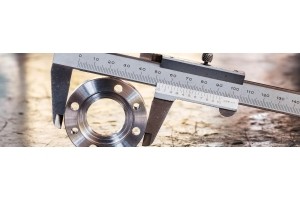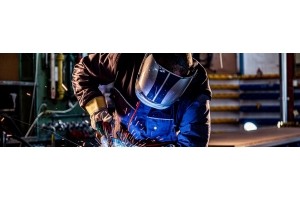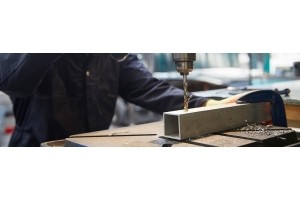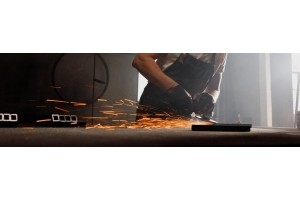- Material
-
- Aluminium 61
- Brass 8
- Stainless Steel 8
- Galvanised Steel 1
- Mild Steel 1
Metalworking 101: How to Begin & What Tools Do I Need
Metalworking 101 covers cutting, shaping, and joining metals. These processes are used to create components, structures, and finished products. It is one of the oldest technical skills and remains central to modern industry and design. From April to June 2025, the manufacturing sector, including metal fabrication, made up 8.8% of the UK's total economic output (gross value added). It also accounted for 7.9% of employment, which is a clear indication of the metalworking’s continued importance.
However, for beginners, the first challenge is understanding which tools and materials to use. This guide explains the fundamentals and shows why a stainless steel sheet - cut to size is a practical starting point. With more than 70 years in the metals industry, our team provides materials cut to your needs. We deliver nationwide and strive to help make the first step into metalworking more accessible for those starting out.
For examples of how metals are used across different industries, visit our sectors page.
What Is Metalworking & Why Does It Matter?
Metalworking turns raw metal into usable parts or finished products. It uses specific fabrication techniques to control the process. These are grouped into three core areas.
- Cutting: Removing material to achieve size and shape.
- Forming: Reshaping metal using pressure, with or without heat.
- Joining: Combining pieces through welding, riveting, or fastening.
These processes are applied at every level, from aerospace production to household DIY. In the UK, there is a growing demand for metal products in construction, infrastructure, and manufacturing. There have been government-backed projects, like The Steel Strategy, to boost the need for fabricated steel.
We supply the full range of common metals, including:
Each is available cut to size, which reduces waste and provides both professionals and hobbyists with materials ready for use.
5 Essential Tools Every Beginner Needs
Before starting a project, it is important to have the correct tools and protective equipment. The Health and Safety Executive (HSE) stresses the importance of personal protective equipment (PPE). This includes gloves, masks, and eye protection to be worn during cutting, welding, or grinding tasks. PPE must be worn in these circumstances as it helps protect against injuries from sparks, debris, and fumes.
Beginners will need access to five tool categories:
- Measuring & Marking Tools: Tape measures, scribers, and markers ensure precision at every stage.
- Cutting Tools: Hacksaws, snips, or angle grinders allow metal to be reduced to the required size.
- Shaping Tools: Hammers, vices, and bending brakes make it possible to adjust material accurately.
- Joining Tools: Rivet tools or entry-level welding equipment create secure connections.
- Finishing Tools: Files and abrasives smooth edges for safe handling.
Each tool type contributes to accuracy, safety, and the quality of the final outcome. For more details on how we prepare metals for these processes, visit our metal processing services.
Common Metals for Beginner Projects
When beginning metalworking, it is helpful to understand how each material behaves. Some metals are easier to handle, while others offer greater durability.
- Stainless steel is resistant to corrosion and provides strength and a professional finish. It is suitable for projects such as splashbacks or brackets.
- Aluminium is lightweight and easy to cut, making it practical for shelving, trim, and edging.
- Mild steel is cost-effective and adaptable. It is commonly used for frameworks and general fabrication.
- Brass and copper are popular for decorative projects and electrical uses. They are valued for their good conductivity and appealing look.
For beginners, we recommend using a stainless steel sheet cut to size as the most practical starting point. It combines strength with ease of maintenance, reducing the need for additional preparation.
To explore the full range of available products, visit our click by category page.
How to Choose the Right Metal for Your Project
Selecting the correct material ensures that a project is both safe and durable. Beginners should focus on three key considerations.
- Environment: Outdoor projects need materials that can resist moisture and weathering. Stainless steel and galvanised steel shine in these conditions. On the other hand, aluminium and mild steel are typically used indoors.
- Strength: Load-bearing projects, such as frameworks or structural supports, require stronger metals. In this case, mild steel and stainless steel are good options. Yet, for lighter uses, aluminium offers sufficient performance.
- Appearance: Projects where design is important benefit from metals with a polished or brushed finish. Stainless steel provides a professional look, while brass is used where a decorative effect is required.
Our team offers all these materials cut to specification, helping reduce waste and saving time on preparation. For additional details about ordering and material options, visit our general FAQs.
A Simple Workflow to Begin Your First Project
A structured approach allows beginners to work safely and efficiently. Following a consistent order helps avoid mistakes and ensures better results:
- Select the material based on the environment, strength, and finish required.
- Measure and mark with accurate tools such as a tape measure and scriber.
- Cut the metal with an appropriate tool, using protective equipment at all times.
- Join the pieces using rivets for simplicity or welding for more permanent connections.
- Finish the surface by filing or sanding edges to improve safety and appearance.
As an example, a simple wall bracket can be made by cutting stainless steel to size, drilling mounting holes, and filing the edges for safe handling. Clear steps like this build confidence and create a solid foundation for future projects.
For details on how materials are dispatched, see our delivery page.
Begin Your Metalworking Journey with Clickmetal
Metalworking 101 reveals that beginners can quickly improve. Using the right tools and choosing the right materials makes a big difference. Stainless steel sheet cut to size offers durability and low maintenance, making it an ideal starting point.
Clickmetal delivers the expertise and service to make the first projects achievable. Our team has over 70 years of experience supplying metals for commercial projects and DIY tasks. Each order is cut to size for quick use. We support this with in-house processes like guillotine cutting, extrusion cutting, and finishing. We offer reliable service for both professionals and hobbyists. Enjoy nationwide delivery, no minimum order, and high-quality standards.
Call 01794 526090, get in touch or browse our metals range to find the right material for your needs.












